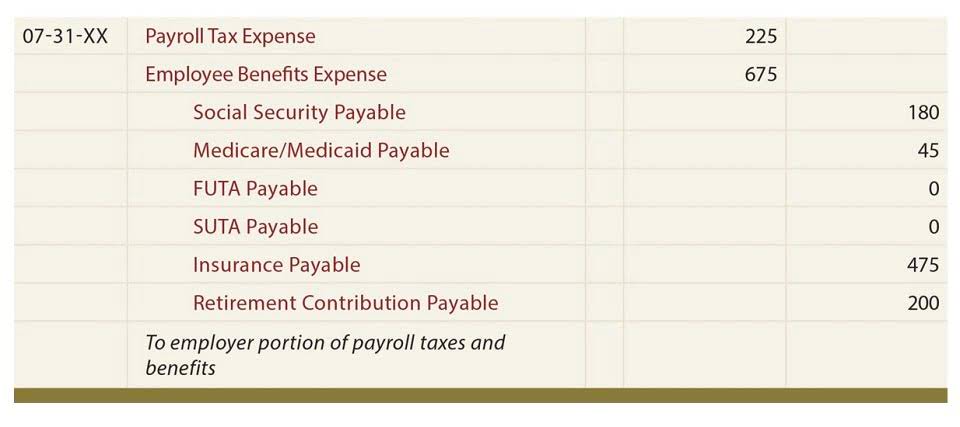
Additionally, this method is arbitrary and subjective, as you choose your percentage based on intuition or experience, rather than actual marketing needs or potential. The percentage of sales method is a marketing budget allocation method that calculates your marketing budget as a fixed percentage of your projected or actual sales revenue. For example, if you decide to allocate 10% of your sales to marketing, and your sales are expected to be $1 million, your marketing budget will be $100,000. This method is based on the assumption that your marketing efforts are proportional to your sales performance, and that your marketing costs vary with your sales volume. The Percent of Sales Method is a valuable tool for businesses looking to forecast expenses and revenues efficiently.

Activity Sampling (Work Sampling): Unveiling Insights into Work Efficiency
Especially when it comes to creating a budgeted set of financial statements. Discover how finance teams across all industries streamline their FP&A with Cube. Connect and map data from your tech stack, including your ERP, CRM, HRIS, business intelligence, and more. Next, Barbara needs to calculate her estimated sales for the upcoming year. Still, despite its shortcomings, it’s a useful method worth understanding and being able to apply.
- The accounts receivable to sales ratio measures a company’s liquidity by determining how many sales are happening on credit.
- Software as a service (SaaS) is a software distribution model that provides customers with access to applications on the internet instead of requiring physical media and custom installation.
- On the other hand, if a customer is unhappy, they will churn quickly, and the business will likely lose money on the investment that they made to acquire that customer.”
- If Customer X is paying $200 per month, and Customer Y is paying $400 per month, your MRR would be $600.
- Companies use these sales development metrics to benchmark their SDR team’s efficiency and ability to grow their pipeline.
- This metric refers to the rate and number of new sales leads or potential customers added to your sales pipeline.
Limitations of the Percent of Sales Method
The four popular methods discussed in this article – Percentage-of-Sales, Objective-and-Task, Competitive Parity, and Affordability – all have their pros and cons. By understanding the advantages and drawbacks of each method, companies can choose the one that best aligns with their business objectives and resources. It’s important to note that there is no one-size-fits-all approach, and companies may need to experiment with different methods before finding the right fit for their needs.
- Overall, this metric gives you insight into the efficiency of your company’s sales and marketing efforts in attracting and nurturing leads.
- This method is particularly relevant for businesses that offer subscription-based services, consumables, or products with a regular repurchase cycle.
- The PS is a method that allows you to see how much of your income comes from each department or product.
- In this article, you will learn what this method is, how it works, and what are its advantages and disadvantages for your marketing operations.
- Net Promoter Score is a customer satisfaction and loyalty metric that measures how likely customers are to recommend your business to others.
- Average Revenue Per User or Account (ARPU/ARPA) is the mean amount of revenue from a single user or customer.
- Then you apply these percentages to the current sales figures to create a financial forecast, which includes the income and spending accounts.
Calculate the percent of revenue for all assets and expenses noted above
This percentage can be determined by industry benchmarks, historical data, or your own judgment. Additionally, estimate your sales revenue for the next period by using sales forecasts, past trends, or market research. Then, multiply your chosen percentage by your estimated sales revenue to get your marketing budget. For example, if you choose 10% and your sales are projected to be $1 million, your marketing budget will be $100,000. Finally, allocate your marketing budget across different channels, campaigns, and activities based on your marketing strategy and objectives.

The Percentage of Sales(PS) is a marketing strategy where the goal is to increase sales by targeting specific customers. The strategy involves following a list of topics on which the company wants to focus, and then finding as many areas as possible where they can reach their customers. Seasonality significantly impacts sales forecasting by influencing customer purchasing behaviors, and understanding seasonal trends is crucial for making accurate predictions. By treating forecasting as an ongoing process rather than a one-time event, you can continuously refine your assumptions, incorporate new data and insights, and adapt to changing market conditions.
Note all assets and expenses that impacted sales during that period, along with amounts
HubSpot’s former VP of Growth Brian Balfour explains that it can only be accurate if your prospects become customers extremely quickly or your marketing and sales expenses are static (which is unlikely). To calculate CAC, divide the total amount you spent on sales and marketing in a given period by the number of customers you acquired in that same period. Average time-to-hire refers to the average time it takes to fill an open position, from when a job is posted to when a candidate is hired.

Sales Development Metrics
- Your priority should depend on your company’s maturity and business model.
- These roles work together to develop and implement comprehensive marketing strategies that effectively reach and persuade target audiences, ultimately contributing to the company’s growth and success.
- It works by using percentages of your total sales and how much of your total sales are made up of different products and services.
- He would then apply those percentages to $400,000, rather than the $250,000 from this year.
- The cost of selling, also referred to as selling expenses or sales expense ratio, is the overall comparison of a sales activity’s expenses to the revenue it generates.
By leveraging these tools, marketing teams can better understand their target audiences, create more effective campaigns, and measure the impact of their efforts on the business. These roles work together to develop and implement comprehensive marketing strategies that effectively reach and persuade target audiences, ultimately contributing to the company’s growth and success. These processes form the foundation of a company’s marketing strategy and guide the development and execution of specific tactics and campaigns. The percentage-of-sales budget method is one of the simplest budget methods available. A sales metrics dashboard provides a visual look at your business’s sales data and metrics. They offer a variety of reports and displays for your sales leaders and reps to review, analyze, and act on.
Key SaaS Sales KPIs to Track
However, it does have limitations and should be used in conjunction with other forecasting techniques for more accurate results. The Percentage of Sales Method is one of the most effective ways to increase your sales. With this method, you will be able to get a clearer picture of what works and what doesn’t in your business. By using this method, you can make more percentage of sales method marketing informed decisions about how to improve your current marketing strategies and how to create new ones that are better suited for your business. The most important factor in sales forecasting is the accuracy and reliability of the data used. More accurate forecasts can be made by combining historical sales data with predictive analytics and regular updates.
You can adjust your percentage accordingly if your marketing efforts are generating high ROI or not meeting your expectations. The length of the sales cycle forecasting method is a valuable approach that considers the time it typically takes for a prospect to move through the sales process, from initial contact to closing the deal. This method recognizes that understanding the average length of the sales cycle is crucial for accurately predicting future revenue and making informed decisions about resource allocation. Yes, sales forecasting helps predict future sales performance and enables companies to make informed decisions.

